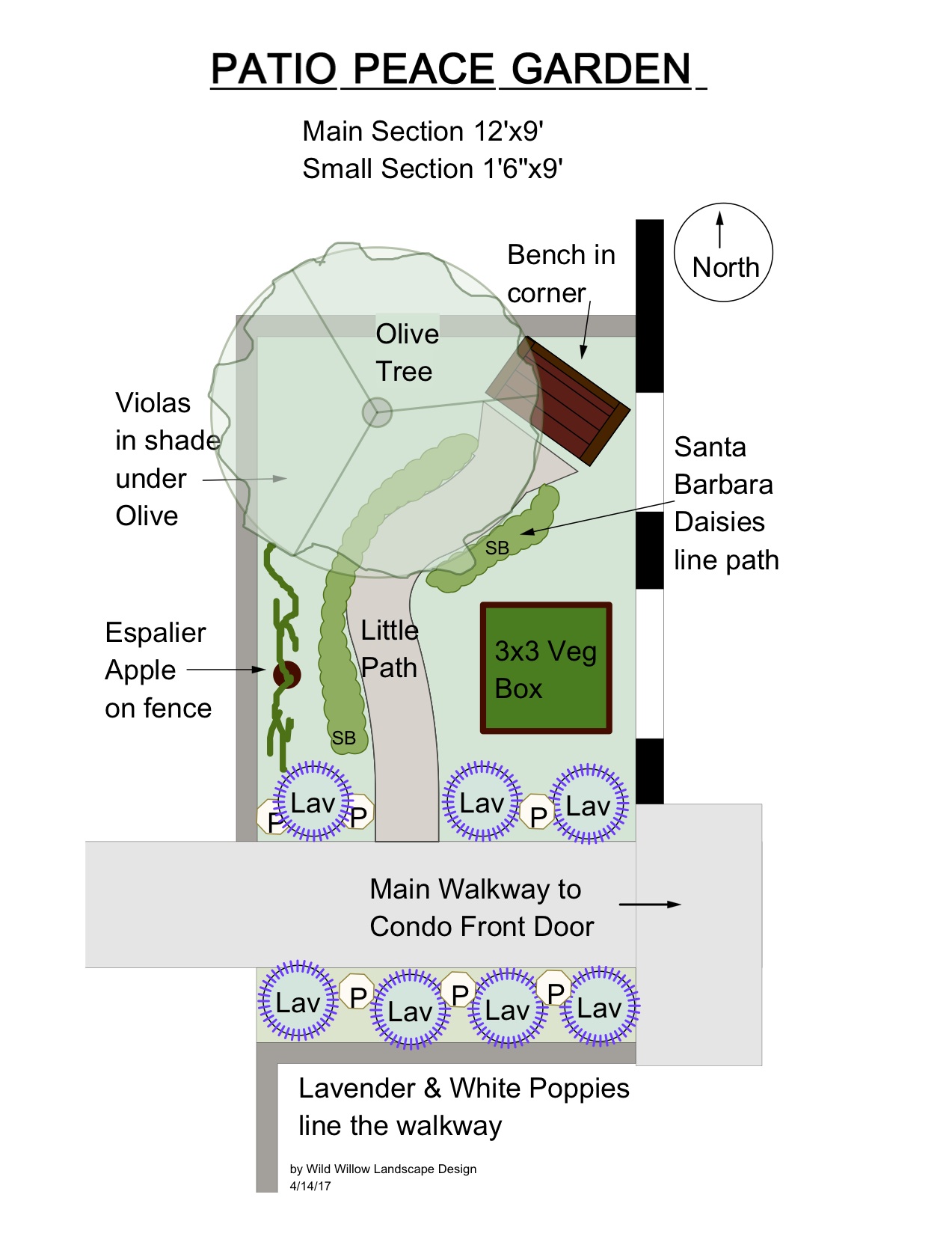My latest writing theme focuses on the language of flowers or plant symbolism. In my first article I designed a little love garden. It was a pink fluffy sketch filled with flowers we associate with romance and love. Last time I explored the world plants we associate with peace – the olive tree, the apple tree, lavender, violets and white poppies.
Now I know sounds silly to believe that one can actually beget amity by installing a garden with plants that someone from the Victorian era deemed denotative of peace. But I think that peaceful intention and effort are powerful. Doesn’t choosing plants that symbolize peace, watching the magic of their growing cycle and delighting in their blossoms and fruit make us all happier people? And if we are happier people aren’t we more likely to be cooperative, compassionate, fair and forgiving? Well, that is my argument.
There have been studies done on the psychological impact of gardening, and research actually does back up my viewpoint. Many studies show that gardening and especially vegetable gardening reduce stress and increase our sense of wellbeing. Growing plants and playing in the dirt increase serotonin and dopamine levels and reduce cortisol. Sarah Rayne, in her article “Petal Power: Why is Gardening So Good for Our Mental Health?” tells us that gardening allows us to nurture, gives us a sense of responsibility, helps us to relax, work through problems, and vent anger safely. Gardening reduces anxiety.
KQED explored the positive impact of gardening in a piece titled “Can Gardening Help Troubled Minds?” The segment looked at how horticultural therapy improved health and self-image and also reduced recidivism in prison yards, troubled youth programs, retirement homes and veteran’s homes.
So, the studies and observations I researched support the positive human of gardening – although they don’t specifically focus on peace plants. For some reason no one has studied that yet. Therefore I threw a veggie planting bed into my peace garden to I could cover all my angles. As it turns out all the symbolic peace plants in my design are edible anyway. Olives, apples, lavenders, violets and California native (Eschscholzia) poppies are either yummy to munch, have medicinal components or add a bit of spice to a garden salad. Isn’t that terrific!
The peaceful plant palette:
- Olive (Olea europaea). Drought tolerant tree. Grey green foliage. Evergreen. Fast growing. Full sun.
- Apple (Malus pumula). Loves water but can be pretty tough once stabled. Bright green foliage. Deciduous. Moderate grower. Full sun. Beautiful pink blossoms that fade to white.
- Lavender (Lavendula sp.) There are many species, cultivars and sizes. Evergreen. Woody sub-shrub. Grey green to medium green foliage. Full sun. Flowers may be deep purple, lavender, pink or white. Aromatic! Water-wise.
- Violets (Viola odorata). Violets are shade to part-sun loving annuals that reseed vigorously. Purple-blue blossoms. Great scent. About 6” tall by 12” wide. Prefer moderate water.
- White Poppies (Eschscholzia californica “Alba” or “White Linen” Annuals that love the sun and reseed vigorously. Low to moderate water. Blossoms vary from creamy white to pure white.
The peaceful garden sketch is based on the real-time square footage of a condo patio here in Sonoma.






Be First to Comment